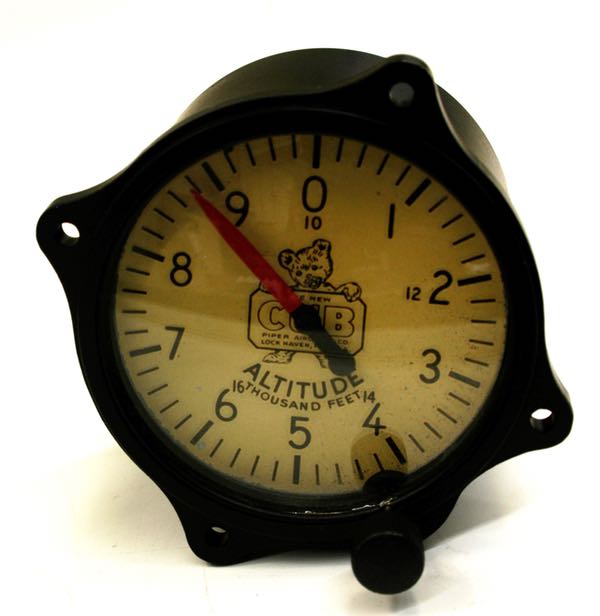Required Equipment
14 CFR §91.205 Instrument and equipment requirements is fairly wordy, so to remember the equipment needed for day VFR pilots use A TOMATO FLAMES. For night flight and IFR you don’t really need any acronyms (though some people like GRABCARD for Instrument flight) since the additional items are fairly obvious.
Day VFR
Anti-collision lamps (certificated after March 11, 1996)
Tachometer
Oil pressure gauge
Manifold pressure gauge for each altitude engine
Airspeed indicator
Temperature gauge for each liquid cooled engine
Oil temperature gauge for each air cooled engine
Fuel level gauge
Landing gear position indicator
Altimeter
Magnetic direction indicator (Compass)
Emergency locator transmitter (ELT)
Seat belts (and airplanes manufactured after July 18, 1978 Safety Harness)
Day VFR
Some people like to remember the day items by grouping them into categories:
Engine
Fuel level gauge
Oil temperature gauge for each air cooled engine
Oil pressure gauge
Tachometer
Manifold pressure gauge for each altitude engine
Temperature gauge for each liquid cooled engine
Instruments
Airspeed indicator
Altimeter
Magnetic direction indicator (Compass)
Safety
Seat belts
Emergency locator transmitter (ELT)
Anti-collision lamps (certificated after March 11, 1996)
Landing gear position indicator
Safety Harness ( manufactured after July 18, 1978 )
Night
Everything from Day plus:
Adequate source of electrical energy
Fuses
Position indicator lamps
IFR
Everything from Day plus:
Generator or alternator of adequate capacity.
Two-way radio communication and navigation equipment suitable for the route to be flown.
Clock
(Normal six pack except VSI)
Sensitive altimeter adjustable for barometric pressure.
Gyroscopic rate-of-turn indicator
Slip-skid indicator
Gyroscopic pitch and bank indicator (artificial horizon).
Gyroscopic direction indicator (directional gyro or equivalent).
IFR Mnemonic— GRABCARD
Generator or Alternator
Radios for Communication and Navigation
Altimeter – Sensitive
Ball – Slip/Skid Indicator
Clock
Attitude Indicator
Rate of Turn Indicator
Directional Gyro (Heading Indicator)
For Hire
Landing light at night
Flotation Device if outside gliding distance
§91.213 Inoperative instruments and equipment.
a) Except as provided in paragraph (d) of this section, no person may take off an aircraft with inoperative instruments or equipment installed unless the following conditions are met:
Minimum Equipment List exists for that aircraft—not likely for your aircraft.
The inoperative instruments and equipment are not— (i) Part of the VFR-day type certification instruments and equipment…
The inoperative instruments and equipment… Removed from the aircraft, the cockpit control placarded, and the maintenance recorded in accordance with §43.9 of this chapter; or
Deactivated and placarded “Inoperative.
You can fly with equipment that is inoperative provided that it is marked as INOP on the panel and an appropriate logbook entry has been made if maintenance has been performed.
Obviously, you cannot fly at night, IFR, or for hire if the equipment is on the list of required items. It is possible to fly with inoperative items, on the VFR list, if a ferry permit is obtained.
If you read the requirements carefully, you can see that they require an altimeter for day flight and at night they require a sensitive altimeter. I stumbled across this tidbit about J3 Cubs at the Air and Space Museum. Notice the lack of a Kollsman window. That why it isn’t a sensitive altimeter and an aircraft with this altimeter cannot fly IFR.

This altimeter was one of the standard instruments onboard the Piper Cub J-3 and L-4 aircraft. Designed by C.G. Taylor in 1931 to be economical and easy to fly, the Cub had only four instruments: an altimeter, a tachometer, an oil temperature gauge and pressure gauge.
Even if you have all the equipment for your flight you still may not be able to take off.
§91.213 Inoperative instruments and equipment.
(d) Except for operations conducted in accordance with paragraph (a) or (c) of this section, a person may takeoff an aircraft in operations conducted under this part with inoperative instruments and equipment without an approved Minimum Equipment List provided—
(3) The inoperative instruments and equipment are—
(i) Removed from the aircraft, the cockpit control placarded, and the maintenance recorded in accordance with §43.9 of this chapter; or
(ii) Deactivated and placarded “Inoperative.” If deactivation of the inoperative instrument or equipment involves maintenance, it must be accomplished and recorded in accordance with part 43 of this chapter; and…


